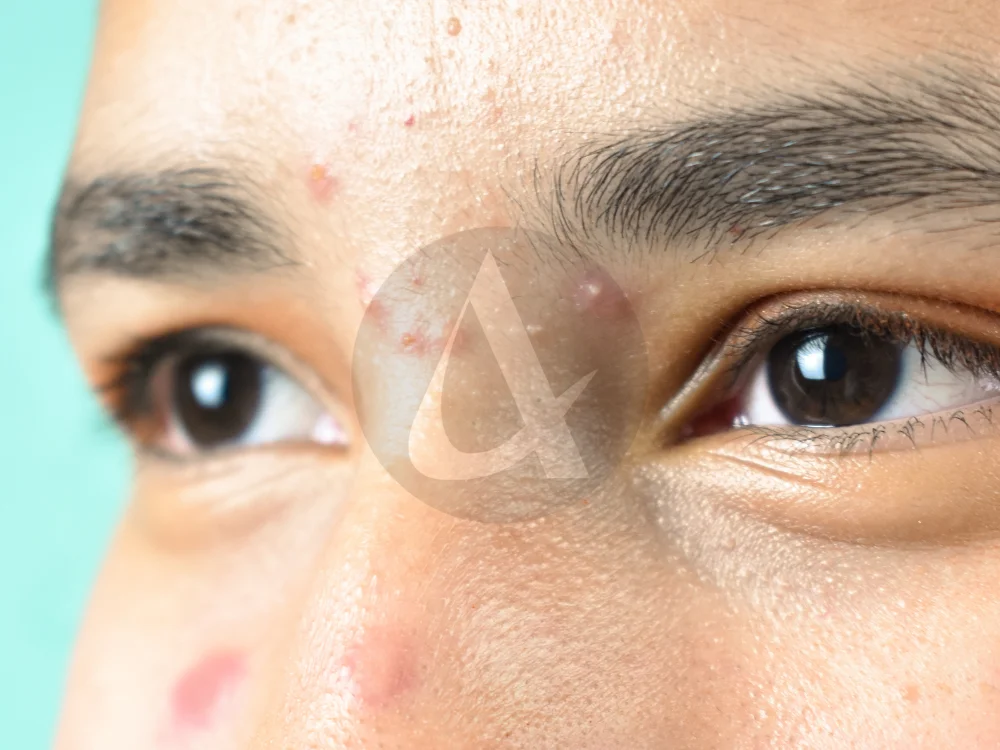Tiny bumps on face can be frustrating, especially when they seem to appear out of nowhere and stubbornly resist typical skincare routines. Whether these bumps are caused by clogged pores, irritation, or underlying skin conditions, understanding their causes and effective treatments is key to achieving smooth, healthy skin. In this comprehensive guide, we’ll explore the causes, types, and proven solutions for treating tiny bumps on face.
What Are Tiny Bumps on Face?
Tiny bumps on face are small, raised spots that may appear anywhere on the skin. These bumps can vary in size, texture, and severity, depending on the underlying cause. They are often harmless but may be cosmetically concerning for many people.
Common Causes of Tiny Bumps on Face
1. Clogged Pores
Dead skin cells, oil, and dirt can accumulate in pores, leading to tiny bumps, often referred to as comedones (whiteheads and blackheads).
2. Keratosis Pilaris
This genetic condition causes rough, tiny bumps on face or body due to excess keratin clogging hair follicles.
3. Milia
Milia are small, white bumps caused by trapped keratin under the skin, often seen in newborns but also common in adults.
4. Acne
Hormonal changes, bacteria, and inflammation can lead to acne, which often manifests as small red or white bumps.
5. Allergic Reactions or Irritation
Skin irritation from skincare products or environmental allergens can trigger small, itchy bumps on the face.
How to Identify Tiny Bumps on Face?
Skin Analysis
A professional dermatologist can diagnose the specific type of bumps through a physical examination.
Common Symptoms
- Texture: Raised and rough or smooth.
- Color: May appear white, red, or skin-colored.
- Location: Forehead, cheeks, chin, or around the eyes.
10 Proven Solutions to Treat Tiny Bumps on Face
1. Maintain a Consistent Skincare Routine
A gentle skincare routine is essential. Use a mild cleanser, avoid harsh scrubbing, and moisturize daily to prevent clogging and irritation.
2. Use Salicylic Acid Products
Salicylic acid is effective in clearing clogged pores, exfoliating dead skin cells, and reducing tiny bumps. Look for cleansers or spot treatments containing this ingredient.
3. Incorporate Retinoids
Retinoids, derived from Vitamin A, promote cell turnover and unclog pores, making them effective against acne and other forms of tiny bumps. Start with a low concentration to avoid irritation.
4. Opt for Chemical Exfoliation
Gentle chemical exfoliants like alpha hydroxy acids (AHAs) and beta hydroxy acids (BHAs) can remove dead skin and reduce bumpiness over time.
5. Hydrate and Protect Your Skin
Dehydration can make tiny bumps more noticeable. Use a non-comedogenic moisturizer and apply sunscreen daily to protect your skin from harmful UV rays.
6. Avoid Triggering Products
Identify skincare or makeup products that may cause breakouts or irritation. Look for labels like “non-comedogenic” and “fragrance-free.”
7. Treat Keratosis Pilaris with Specialized Products
For keratosis pilaris, lotions containing urea or lactic acid can help soften the skin and reduce rough bumps.
8. Try Home Remedies
Natural remedies like tea tree oil (diluted) or aloe vera gel can soothe irritated skin and reduce inflammation.
9. Consult a Dermatologist
For persistent bumps, consult a dermatologist who may recommend prescription treatments, such as topical antibiotics or oral medications.
10. Regularly Clean Bedding and Towels
Dirty pillowcases and towels can harbor bacteria, contributing to breakouts. Wash them regularly in hot water.
Prevention Tips for Tiny Bumps on Face
1. Avoid Overwashing
Overwashing can strip the skin of natural oils, causing irritation and increased oil production, which may lead to bumps.
2. Patch-Test New Products
Always patch-test new skincare products on a small area to ensure they don’t trigger irritation or allergies.
3. Manage Stress
Stress can worsen skin conditions, including acne. Practice relaxation techniques like meditation or yoga.
4. Adopt a Healthy Diet
Eating a balanced diet rich in vitamins and antioxidants can promote clear skin. Avoid excessive sugar and processed foods.
When to Seek Medical Attention?
If your tiny bumps on face persist, worsen, or are accompanied by other symptoms like itching or pain, it’s important to see a dermatologist. Conditions like rosacea or fungal infections may require specialized treatment.
FAQs About Tiny Bumps on Face
1. What are the most common causes of tiny bumps on the face?
Clogged pores, keratosis pilaris, milia, acne, and allergic reactions are the leading causes of tiny bumps on the face.
2. Can diet influence tiny bumps on the face?
Yes, a diet high in sugar and processed foods can worsen acne and other skin issues. A healthy diet supports clear skin.
3. Are home remedies effective for treating tiny bumps?
Some home remedies, like aloe vera or tea tree oil, can reduce inflammation and soothe skin, but persistent bumps may require professional treatment.
4. Can sunscreen cause tiny bumps?
Some sunscreens can clog pores, leading to tiny bumps. Opt for non-comedogenic and oil-free formulations.
5. Is it safe to pop tiny bumps on the face?
No, popping bumps can lead to infection, scarring, and further irritation. It’s best to treat them with appropriate skincare.
6. How long does it take to see results from treatments?
Results vary, but consistent use of targeted treatments can show improvement within 4–6 weeks.
Conclusion
Tiny bumps on the face can be managed effectively with the right combination of skincare, lifestyle changes, and professional treatments. By understanding their causes and adopting proven solutions, you can achieve smoother, healthier skin over time.






